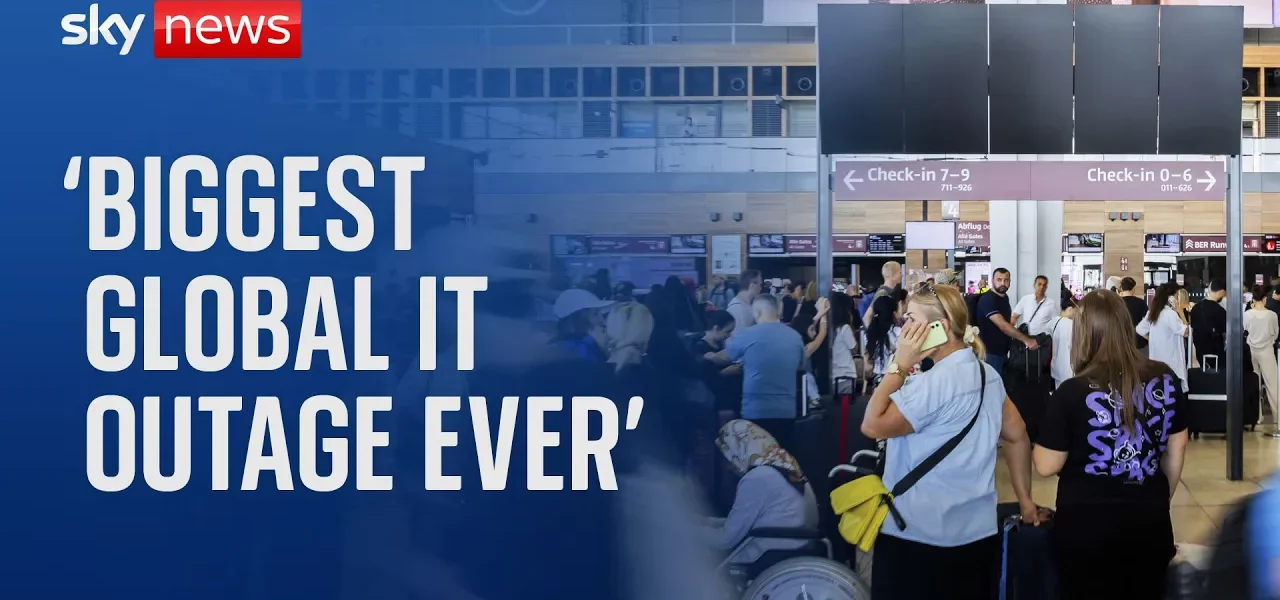The Largest IT Outage in History: Causes, Effects, and Future Implications

This article delves into the unprecedented scale of a global IT outage, its root causes, and the far-reaching effects on various sectors, including aviation and financial services. We will explore the implications for cybersecurity and the potential for future incidents.
Introduction to the IT Outage
In recent days, the world has witnessed a staggering IT outage that has disrupted operations across numerous sectors globally. Reports of significant issues have flooded in from airports, airlines, and various companies, highlighting the extensive reach of this incident. This situation has raised crucial questions regarding the robustness of our global IT infrastructure and the dominance of a few major tech players in the market. In this article, we will examine the details surrounding this outage, the technology involved, and the implications for the future of cybersecurity and operational resilience.
Understanding the Scale of the Outage
This incident is being described as possibly the largest IT outage the world has ever encountered. Here are some key aspects that illustrate its scale:
- Global Impact: Reports have emerged from numerous countries, indicating widespread disruptions in services.
- Affected Sectors: Major sectors, especially aviation and financial services, have reported significant challenges.
- Unprecedented Nature: Unlike previous isolated IT outages, this incident highlights systemic vulnerabilities.
Root Causes of the Outage
At the core of this massive failure lies a software upgrade related to the Falcon Sensor, a product developed by CrowdStrike. This software plays a critical role in cybersecurity and threat detection.
About CrowdStrike
CrowdStrike is a prominent player in the cybersecurity space, valued at approximately $83 billion. It gained recognition for identifying major hacking threats, including those linked to Russian entities. The company’s software is integral to protecting IT systems from cyber threats.
The Role of Falcon Sensor
The Falcon Sensor leverages artificial intelligence to detect and neutralize cyber threats. A significant portion of its market, around 24%, is dedicated to endpoint protection. Its close partnership with Microsoft has made it a crucial component of many organizations’ IT defenses.
Sector-Specific Impacts
This outage has had profound effects on several key sectors, notably aviation and financial services.
Aviation Sector Disruptions
The aviation industry has been among the hardest hit. Key points include:
- Grounded Flights: Major airlines, including United, Delta, and American Airlines, received requests to ground all flights.
- Airport Operations: Airports in cities such as Berlin have halted takeoff and landing operations.
- Check-In Issues: Airlines like KLM and Turkish Airlines have reported significant challenges with ticketing and customer check-in procedures.
Financial Services Challenges
The financial sector has also faced disruptions, particularly affecting trading and regulatory processes:
- London Stock Exchange: The exchange experienced delays in regulatory announcements.
- Payroll Risks: A potential crisis loomed over month-end payroll processing, heavily reliant on IT systems.
- Market Stability: Despite trading continuing, the situation could have escalated further if it coincided with payroll deadlines.
Potential Cybersecurity Risks
As the dust settles from this incident, the cybersecurity landscape may face new challenges. The downtime of critical protective software like Falcon Sensor may encourage malicious actors to exploit vulnerabilities.
Emerging Threats
The potential for increased cyberattacks is a grave concern:
- State-Sponsored Attacks: Malicious state entities might take advantage of the situation to launch attacks.
- Individual Hackers: Private individuals may seek to exploit weakened defenses for personal gain.
- Increased Vulnerability: With critical systems down, businesses may be more susceptible to breaches.
Conclusion
This unprecedented IT outage has not only tested the resilience of global infrastructure but also raised important questions about the power dynamics in the tech industry. As we move forward, it is crucial for regulators, policymakers, and industry leaders to address these vulnerabilities to prevent future occurrences. We urge all readers to stay informed and vigilant regarding their own cybersecurity measures. For more insights on technology and cybersecurity, explore our related articles.
“`




